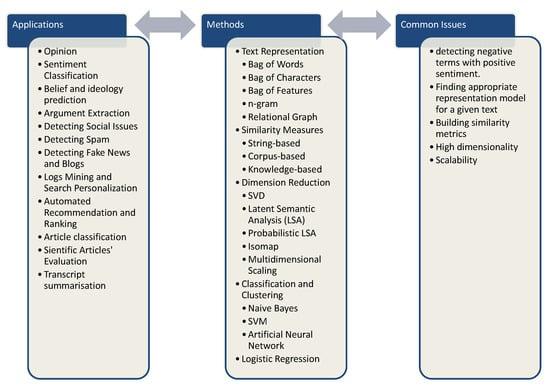USGAS Water Conservation Playbook: A New era for Golf Courses
In an effort to dispel myths regarding water usage in golf, the United States Golf Association (USGA) has introduced a detailed Water Conservation Playbook. This initiative aims to assist golf courses in refining their irrigation methods and minimizing water consumption.Funded by a significant 15-year investment of $30 million, this project addresses the pressing issues of diminishing water resources and climate change impacts on the sport.
The guide provides actionable strategies that cater to various financial constraints and environmental conditions, empowering golf course managers with essential tools to adopt enduring practices without sacrificing play quality.As discussions around water conservation gain momentum, the USGA’s proactive approach seeks to enlighten both golfers and course operators about sustainable practices that ensure a greener future for the game.
The Significance of Water Conservation in Golf Course Management
The recently launched guide from the USGA aims to clarify prevalent misconceptions about water use on golf courses. Many golfers and local residents mistakenly believe that these facilities consume excessive amounts of water, thereby depleting community resources. However, advancements in turf management and irrigation technology have significantly improved efficiency in water usage.
For instance, new grass varieties developed through USGA initiatives require less hydration while still providing lush playing surfaces—striking a balance between environmental duty and golfing needs.
The guide also highlights strategic irrigation techniques designed to minimize wasteful practices. Many courses now employ sophisticated irrigation systems equipped with moisture sensors that allow for precise watering schedules—thereby drastically reducing unneeded consumption. Key recommended practices include:
- Scheduled Irrigation: Watering during cooler times of day reduces evaporation losses.
- Drought-Tolerant Grass Varieties: Selecting species that thrive with minimal watering requirements.
- Soil Moisture Monitoring: Utilizing technology to determine when grass genuinely needs hydration.
The USGA encourages collaboration among course managers, agronomists, and local communities as part of these efforts. By enhancing understanding around effective water management techniques, golf courses can improve their ecological footprint while ensuring an enjoyable experience for players. A sustained focus on conservation not only benefits the sport but also bolsters public perception of golf facilities as responsible custodians of natural resources.
Misperceptions About Water Use on Golf Courses
A common belief among golfers is that maintaining vibrant greens requires vast quantities of water—a notion frequently enough exaggerated by public perception. According to data from the USGA’s latest guide, golf courses account for merely 1.3% of total irrigation water use across the United States—a figure underscoring current efficiencies within industry practices aimed at sustainable resource management.
Additonally, many assume that overall water consumption by these facilities has either plateaued or increased over time; however recent statistics reveal a notable reduction—golf courses are using approximately 29% less water
An additional misconception is that optimal turf conditions necessitate excessive watering; however specialized environments benefit greatly from advanced turf management techniques such as soil moisture monitoring combined with drought-resistant grasses which facilitate precise irrigation methods—ensuring vibrant landscapes without straining local supplies. the release of this thorough playbook marks a meaningful step toward sustainability within golfing operations nationwide; it emphasizes responsible stewardship over precious resources while offering practical recommendations tailored specifically towards improving operational efficiency related directly back into facility maintenance budgets. This emphasis placed upon education/training amongst staff members involved within course operations cannot be overstated! Workshops alongside hands-on demonstrations serve vital roles improving comprehension surrounding advanced methodologies associated directly back into conservation efforts being pursued actively today! Furthermore sharing experiences/results amongst peers creates opportunities fostering communal learning environments where everyone benefits collectively moving forward together!
The importance placed upon educating both golfers and communities about these innovative approaches is emphasized throughout the USGA’s guidelines as it fosters greater support towards sustainability initiatives within golfing contexts.Pioneering Strategies for Enhanced Water Efficiency at Golf Courses
Key suggestions include:
Turf Management plays an integral role promoting sustainability throughout golfing endeavors addressing ecological concerns whilst simultaneously enhancing player experiences enjoyed daily! Through implementing precise managerial techniques available today we can significantly reduce our reliance upon external inputs such as chemicals/fertilizers whilst improving soil health contributing positively long-term viability associated closely tied together sportsmanship itself!
Key strategies employed here include:
- < strong >Soil Health Enhancement Techniques:< / strong > Maintaining robust ecosystems crucially crucial utilizing aeration/additional organic matter improves structure promotes healthy root advancement enhances retention capabilities overall leading better outcomes achieved consistently over time !< / li >
- < strong >Water Management Techniques:< / strong Employing advanced systems coupled alongside moisture sensors allows us achieve maximum efficiency ensuring proper hydration levels maintained without wasting valuable resource unnecessarily !< / li >
- < strong>Natives/Drought Resistant Grasses Selection:< / strong Choosing appropriate species requiring lower amounts adapting well climatic variations drastically lowers demands faced collectively impacting entire system positively !< / li >Additonally superintendents increasingly adopting eco-amiable measures aimed lowering carbon footprints seen widely nowadays including renewable energy sources powering equipment used landscaping promoting biodiversity native plants becoming commonplace too resulting positive impacts felt far beyond just individual properties alone creating models showcasing what true stewardship looks like locally globally alike encouraging others follow suit wherever possible ! Ongoing engagement educational outreach programs help demystify efforts undertaken highlighting importance responsible turf care preserving integrity sport itself moving forward sustainably together!
Unlocking the Truth: USGA’s New Water-Conservation Guide Challenges Common golfer Myths!
Meta Title: USGA water Conservation Guide: debunking Golfer Myths
Meta Description: Discover how the USGA’s new water-conservation guide dispels common golfer myths about water use on golf courses. Learn about sustainable practices and environmental obligation.
Overview of the USGA’s Water-Conservation Guide
The United States Golf Association (USGA) has announced the release of its latest resource aimed at optimizing water usage across golf courses— the “Water Conservation Playbook.” This guide seeks to challenge common misconceptions among golfers regarding water conservation practices. With golf courses facing increasing challenges related to water availability and environmental sustainability,the USGA’s initiative becomes crucial for the future of the game.
Key Objectives of the Guide
- Promote sustainable Practices: encourage golf courses to adopt water-saving techniques that maintain excellent playing conditions.
- Educate Golfers: Inform golfers about the realities of water management on golf courses, debunking prevalent myths.
- Support Environmental Responsibility: Align golf with broader environmental efforts, especially concerning climate change and resource preservation.
Common Misconceptions Addressed
1. Myth: Golf Courses Waste Excess Water
Contrary to popular belief, many golfers assume that golf courses waste a meaningful amount of water. The USGA dispels this myth by showcasing how modern irrigation systems, designed using advanced technology, efficiently utilize water resources on golf courses.
Key Points:
- Advanced irrigation technologies target specific areas requiring water, reducing runoff.
- Courses conduct regular assessments to ensure optimal water use based on environmental conditions.
2. Myth: Grass Types are not Significant
Another common misconception is that all grass types require the same amount of water to thrive. The guide emphasizes that selecting drought-resistant grass varieties can drastically lower water needs.
Key Points:
- Different grass types vary significantly in their water consumption levels.
- Choosing local grass species can lead to better adaptation to climate conditions, reducing overall water usage.
3. Myth: More Water Equals Better Greens
Some golfers believe that lush,green courses require excessive watering to maintain pristine conditions. The USGA explains how overwatering can actually harm turf health.
Key Points:
- Overwatering can lead to shallow root systems, making grass more susceptible to pests and disease.
- Optimal watering encourages stronger root development, resulting in healthier turf.
Benefits of the Water Conservation Guide
Enhancing Course Quality and Playability
Implementing the guidelines from the water conservation guide not only aids in water management but also enhances the overall quality of the courses:
- Improved Turf Health: Healthy grass promotes consistent playing conditions and reduces maintenance costs.
- Sustainable practices: Long-term adoption of conservation measures leads to better ecological outcomes.
Community Engagement and Awareness
The guide encourages golf course superintendents and managers to communicate with golfers about water management efforts. This can lead to greater community engagement and support for sustainability initiatives.
Strategies for Dialogue:
- Regular updates on water conservation practices via newsletters or social media.
- Workshops and discussions at the course to educate golfers on the importance of water conservation.
Practical Tips for Golf courses
1. Implementing efficient irrigation Systems
- Utilize smart irrigation controllers that adjust watering schedules based on real-time weather data.
- Conduct soil moisture tests regularly to determine actual water needs.
2. Emphasizing Native Plant Species
- Transition to native and drought-resistant plants for landscaping, wich require less water than non-native species.
3. Promoting Golf Course Best Practices
| Best Practice | Description |
|————————————-|——————————————————|
| Auditing Water Usage | Regular assessments to track and reduce water use. |
| Educating Staff and Players | Training employees on conservation techniques and engaging golfers in dialogue.|
| Implementing Rainwater Harvesting | Collecting rainwater for irrigation purposes. |
Case studies
Course A: Drought-Resilient Strategies
Golf Course A implemented the USGA guidelines,switching to drought-resistant grasses,resulting in a 30% reduction in water usage while maintaining playability.
Course B: Community Awareness Program
Golf Course B adopted a community engagement strategy focused on water conservation,leading to increased golfer support for sustainable practices.
First-Hand Experience
Testimonial from Course Superintendent
“since we began implementing practices from the USGA Water Conservation playbook, we’ve noticed not only a decrease in water use but also an improvement in our course conditions. Golfers are responding positively to our efforts, and it feels great to contribute to environmental sustainability.”
Conclusion
The USGA’s Water Conservation playbook offers a wealth of knowledge and guidelines focused on improving water-use efficiency in golf and challenging common myths. By embracing these practices, golf courses can ensure a sustainable future while providing excellent playing conditions for golfers.
by continually educating players and implementing effective strategies, the golf community can thrive while being stewards of the habitat.
You might be interested in …
Rules Guy Unveils the Truth: Can Misstating Your Stroke Count Lead to a Penalty in Golf?
In the captivating realm of golf, precision is everything. But what unfolds when a player accidentally reveals an incorrect stroke count? Enter Rules Guy, ready to unravel this intriguing dilemma and determine if such a slip-up warrants a penalty. Dive into the fascinating world of golf etiquette and uncover how accuracy plays a crucial role in the game!
Unlock Your Best Swing: Top Golf Instructors Reveal Their Ultimate Tips!
**LIV Golfers Given Qualification Path to The Open**
In an exciting turn of events, LIV golfers are now granted a direct qualification route to The Open! This groundbreaking decision marks a pivotal moment, showcasing the increasing acceptance of LIV players in the esteemed world of traditional professional golf.—
**Top Golf Teachers Share Best Swing Advice**
In a recent engaging forum, top golf instructors unveiled their most valuable swing tips, focusing on essential fundamentals like grip, stance, and rhythm. These expert insights are designed to elevate performance and precision for golfers at every level, helping you refine your game and hit those perfect shots!Don’t Miss a Moment: Your Ultimate Guide to Watching Round 1 of the 2025 American Express Thursday Coverage!
The 2025 American Express is set to ignite the excitement with Round 1 coverage kicking off this Thursday! Tune in for live broadcasts on major networks, ensuring you don’t miss a moment of the action. Plus, fans can catch all the thrills online through the official tournament website and select sports apps. Get ready for an unforgettable experience!






